Import Scripting Rule
Importing a Rule
First, make sure you're logged in and navigate to the Bussiness Rules category on the sidebar.
Importing a rule can have one of two meanings:
1. Importing a new Rule
To import a new Rule navigate to the Bussiness Rules category through the sidebar or select a folder you want the rule imported into in the Folders manager.
Click the Import Rule button on the top right. Shown in the image below.
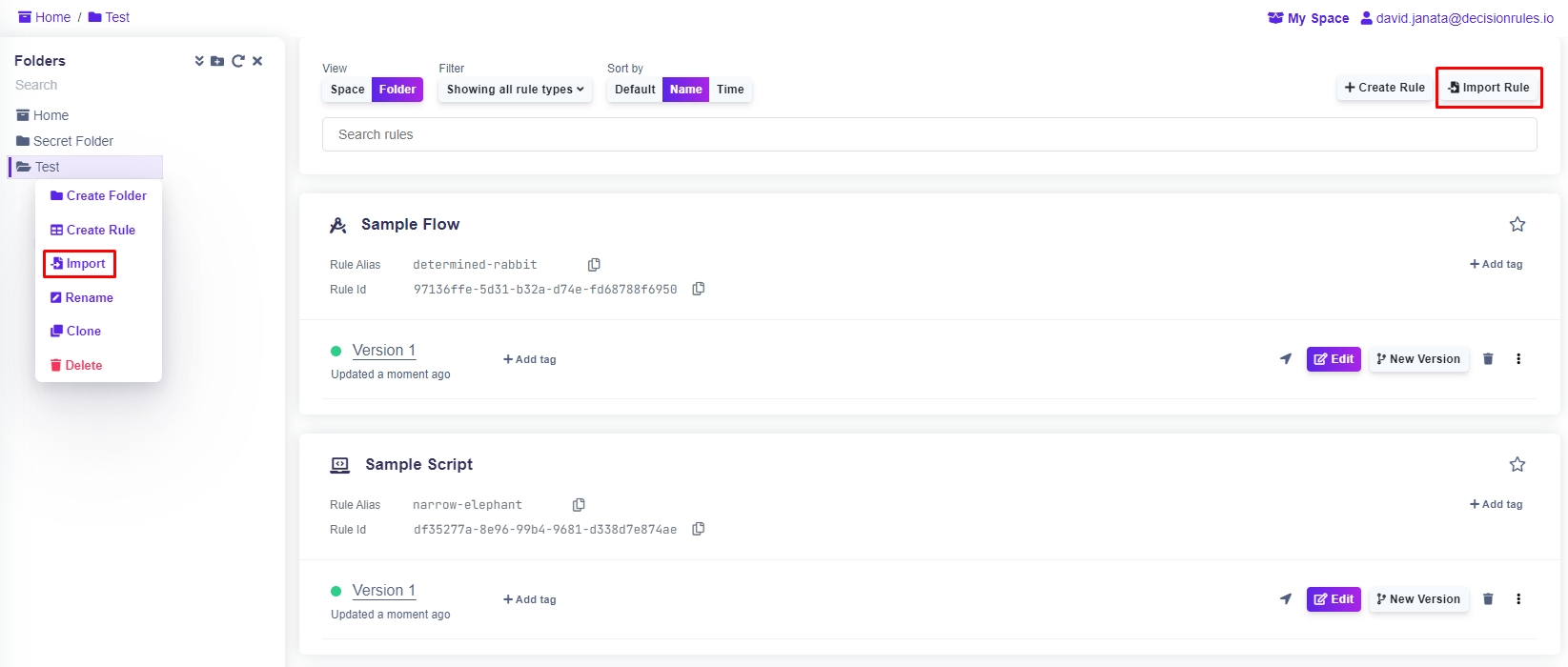
You will be prompted to drop or choose a file on your system containig the rule.
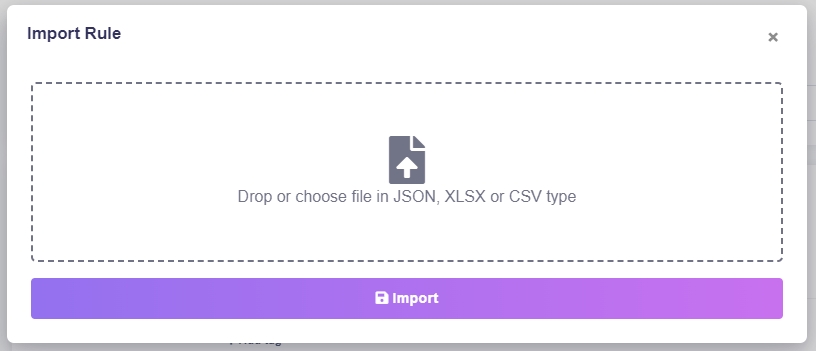
Drag and drop your rule file into the dashed area or click within it to open a File Explorer. For Decision Trees, the rule file can only have the format of JSON.
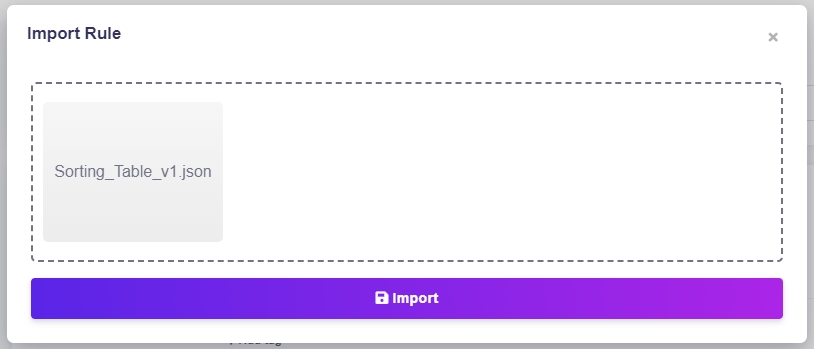
Once your rule file has been selected, click the Import button.
2. Importing a new version of an existing Rule
To import a new version of an existing Rule
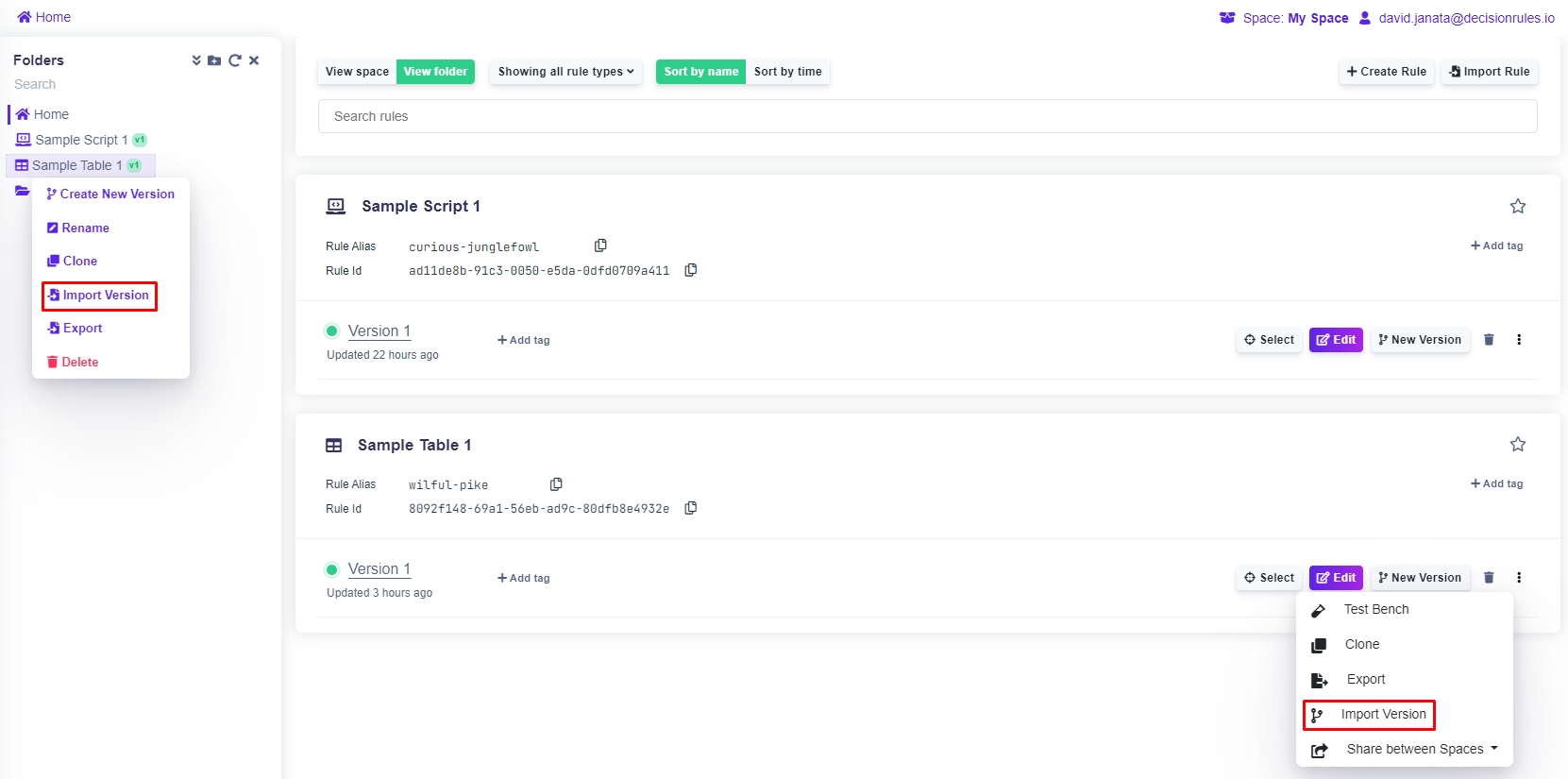

You will be prompted with the following window.
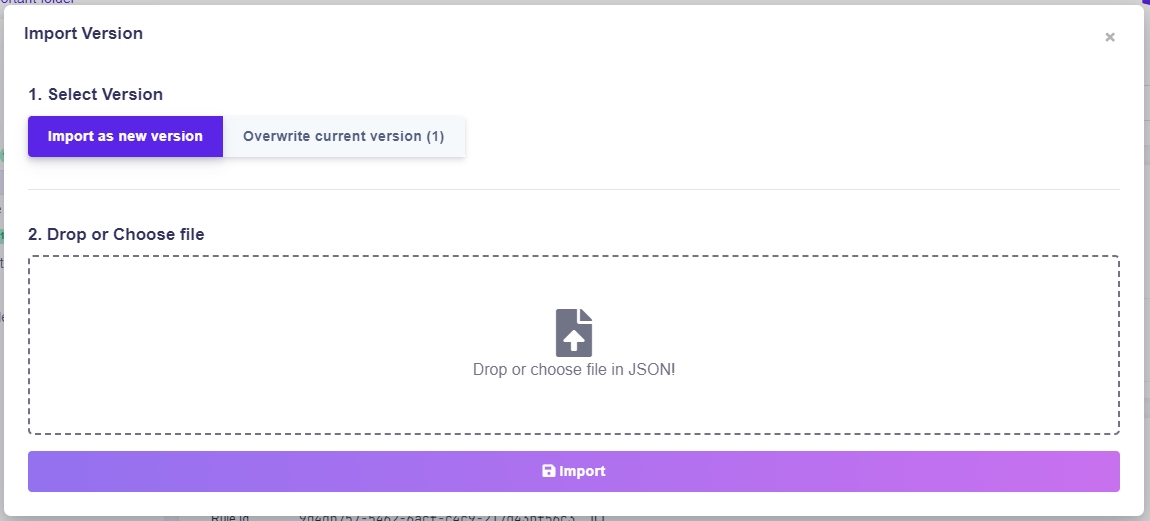
First, select whether you would like:
To import the rule as a new version of the existing rule.
or
To overwrite the latest version of the existing rule.
Overwriting the latest version cannot be undone. The overwritten version will be permanently lost.
After selecting the method of import, drag and drop your rule file into the dashed area or click within it to open a File Explorer. For Scripting Rules, the rule file can only have the format of JSON.
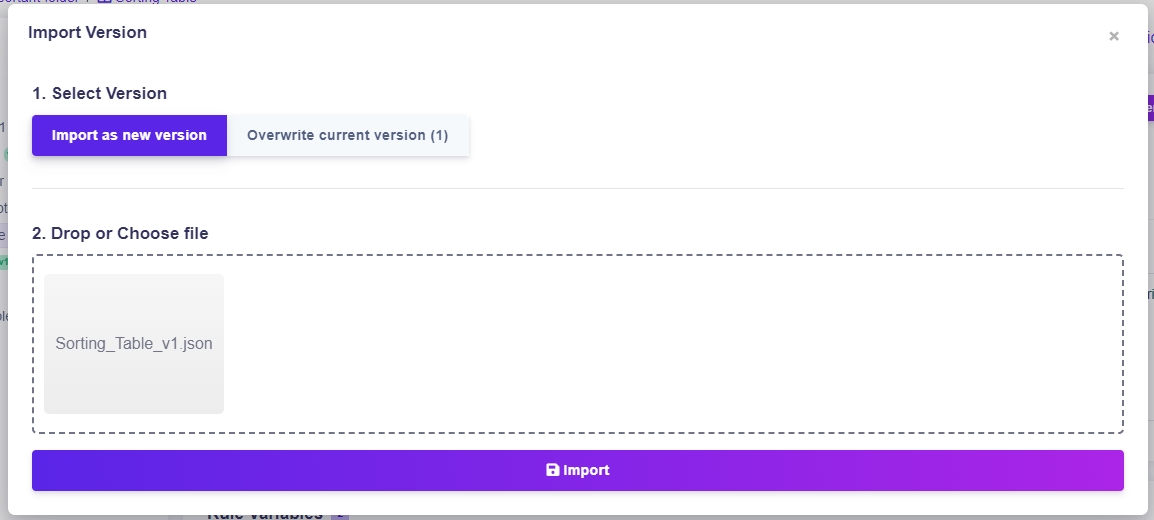
Once your rule file has been selected, click the Import button.